Estimated Read Time: 21 minutes
Are We Loving Nature to Death?
Decision time.
What should we do? How would you balance people and nature – how would you safeguard biodiversity while bridging the urban-rural divide, growing our economy, meaningfully achieving reconciliation and overcoming divisive cultural wars?
Look, picking sides is easy. Knowing who’s right and who’s wrong is easy. But making the call? Living with the consequences? That’s hard.
We might not live in the society we want to live in. We might not have the leaders we want – in politics, in business, in advocacy, in media. We might not like the facts we’re told – or how the facts are presented.
And yet today? This is what we have.
We can change it, but change takes time. And the question isn’t what we’ll do tomorrow, but what can we do today?
After all, the issues are too urgent and too real to wait until tomorrow. We need to make a decision today – for people and for nature.
But before you do, author and tourism industry expert Rick Antonson wants you to know this:
“Travel sits on the right hand of peace.”
Rick’s right. For all its ills, tourism – seeing nature, being in nature – is an imperative. As Rick reminds us, “the more people get out and see the values of other people – the more that people go to parts of the world that they don’t know, where they’re confronted with things that give them a little bit of fear, apprehension, and uncertainty – in those moments, people are more attuned to learning.”
But don’t just take Rick’s word for it.
“I believe that once a person experiences a beautiful and pristine area, they will be really motivated to make sure that those kinds of experiences are (possible for everyone).”
Sam Sullivan understands this better than most, having sat at the government cabinet table and been tasked with making hard decisions.
“I believe that in order to get this political system to support an initiative, we need to get the people to support it.”
And for that to happen – to build support for helping biodiversity – seeing is believing, as Sam notes.
“One of the ways is to get people to observe things close at hand. It’s one reason that I have differences with some environmentalists about zoos and aquariums. If you aren’t going to have young children getting into some of the wilder areas, you need to bring it to them.”
Brian Keating agrees.
“Look, I’d be the first one to say let’s get rid of all zoos around the world if we could. But the fact is, we have a population of people that are ecologically not that tuned in.”
Brian is the former Head of Conservation Outreach at the Calgary Zoo and he agrees with Sam that zoos are a vital force for good.
“Getting people on board is key. And that’s where zoos primarily fill that function.”
There is however, a ‘but’ Brian tells us
“There is no comparison to the real thing.”
Even still, Brian says “we can’t have everyone go outside and go into the national parks. Our national parks are already crowded.”
Famed bear biologist Dr. Stephen Herrero explains the issue.
“In Mount Robson, Banff, Jasper, Yellowstone – all areas that have visible grizzly bear populations – the tourist levels have increased. It’s not a simple situation.”
Why?
Stephen says “you can’t have grizzly bears feeding on the roadside in an area where there’s high speed motor vehicles because eventually the odds of being hit by a vehicle are too great.”
And don’t forget, Stephen adds, “you can’t have grizzly bears being anywhere where they can get at garbage.”
It’s why the question of how to balance people and nature in parks has always been and always will be a struggle, given technological and cultural changes, Stephen argues.
“Obviously, it’s pretty clear the attraction of people being close to bears. How close is too close and how close is good enough? It’s a dynamic that has to be managed.”
That dynamic is a tension veterinarian and researcher Anna Morgan has explored extensively.
Nature storytelling, Anna tells us, is the “capability of representing the whole, the system, the unspoken, and the possibilities that lie within. It is a starting point for meaningful dialogue into what ecological health means to different communities.”
Anna’s research has underscored the value of being in nature and seeing it.
“This has general benefits, not only to individuals but to society; it reduces the costs to health, amongst other things, which in turn benefits the economy, reducing the burden on healthcare systems.”
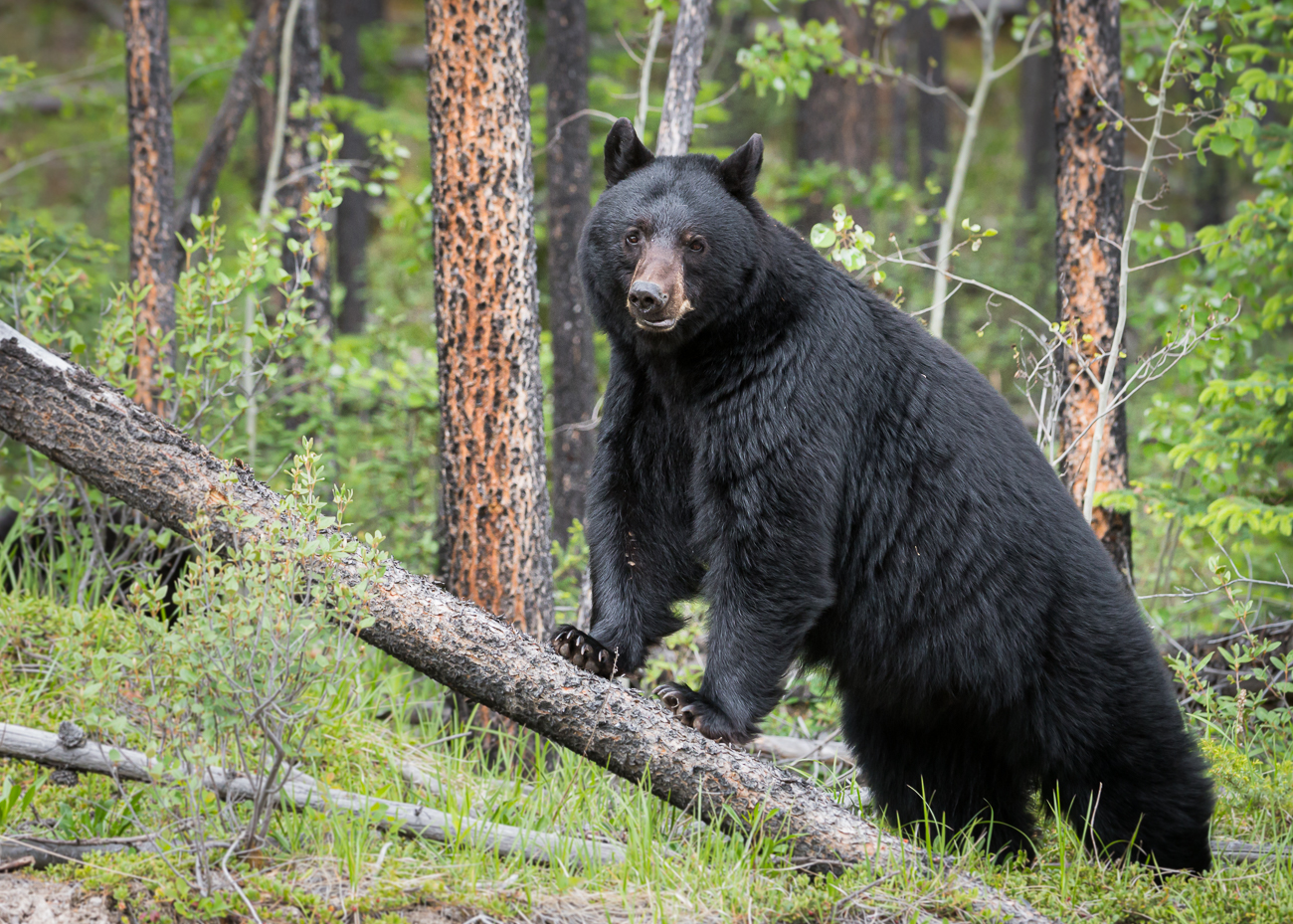
But Anna also understands the impact well intentioned tourism can have on wildlife, but adds it’s “mostly rooted in naivety rather than being a deliberate attempt to be destructive or harmful to wildlife.”
The answer?
“There is no easy solution to the issue of saturation. And of course, saturation means different things to different people…I would say that, whilst responsibility should be shared by all, prominent groups which promote recreational activities and photography of nature, whether it’s a federal agency like Parks Canada, or the Wildlife Photographer of the Year competition, have additional responsibility of leading by example to then be able to encourage and demand the highest ethical standards of others.”
But Elliott Ingles says it’s just not that simple. And the perfect answer of how to balance people and wildlife in parks? Elliott jokes, “if I knew that, it would resolve a lot of problems for us!”
As you’ll remember, Elliott Ingles is Mount Robson’s Area Supervisor and as he adds, “when you’re on holidays, you’re on holidays. You’re not thinking about me, running around, chasing a bear. But, you know, we really rely on help from the public.”
That’s why Elliott says we all need to be part of the solution.
“Responsible viewing is on the person. So, how do we get that message across to people? I mean, we’re trying.”
For that reason, professional storytellers and tourism influencers – like Michelle Valberg – are increasingly being looked at to model good stewardship for their followers.
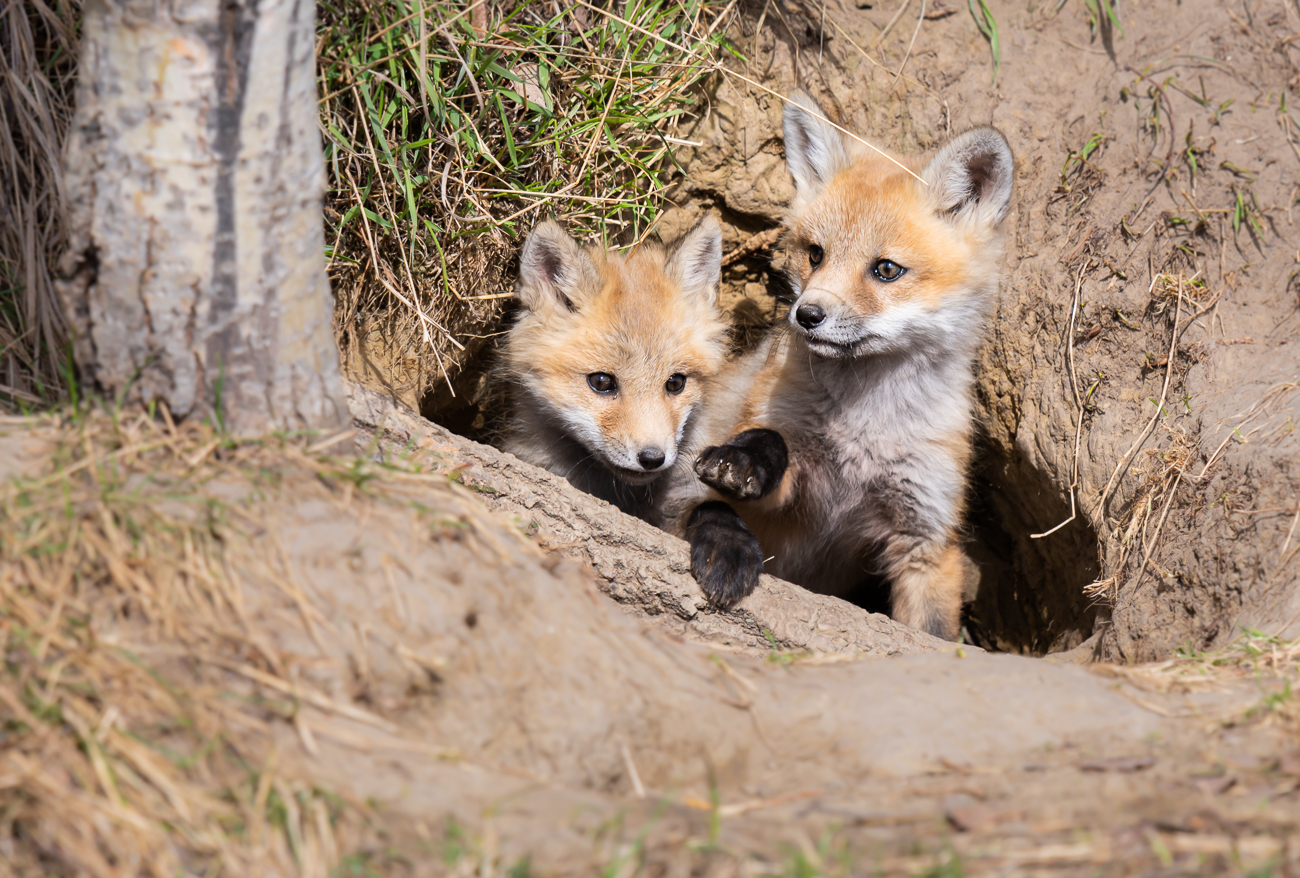
“It’s the understanding of people who are in wildlife photography and in these situations that they (have to be) very understanding and very respectful to the animals.”
But good ethics? Good Stewardship? It can be confusing, even for a professional, says Michelle.
“We’re still new in all this as well. We’re still growing and trying to figure out what the boundaries are.”
Should there be a code of conduct that visitors – or at least professional photographers – need to meet in order to spend time on our parks? Michelle says no.
It would be great to think, but I think it’s completely unreasonable when you think that there are no boundaries of who can be a photographer and who can’t be. There are just too many people who think that they have the right to walk into nature and have as much right to be there as that animal does. I don’t see that coming anytime soon. I think we’re just too overpopulated for that to happen.”
And Mark Cruz, who works for camera manufacturer Nikon Canada, argues there’s an even bigger issue with regulating ethics: Freedom.
“Ultimately, we can’t be the arbitrator of the way that people use their equipment, and that’s a good thing. You don’t want to take that freedom away from the way people use our equipment.”
Mount Robson’s Elliott Ingles gets Mark’s point, but without someone taking ownership of the issue, the alternative is no one gets to view wildlife because there are too few resources to manage the situation.
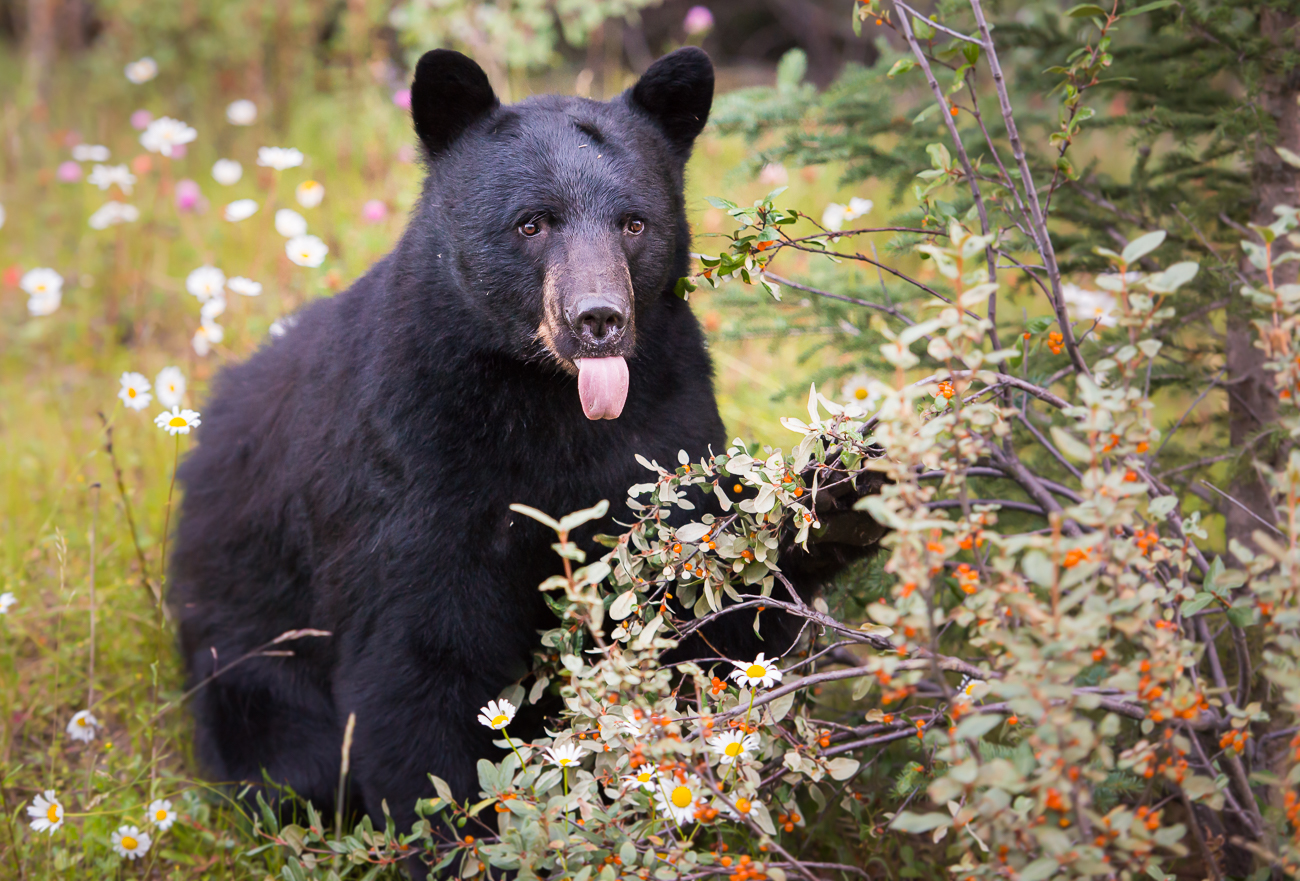
“I mean, it’s one of our biggest challenges – working with wildlife. We’ll get 15 calls a day about bears and we’re running around like crazy out here. It’s hard enough to work with an animal, but it’s harder to work with an animal with 50 people around. And as much as I want people to have that amazing experience, I think it’s that understanding that for us it’s dangerous, for them it’s dangerous and, really, we just want what’s best for the animal.”
It’s why, Joe Urie says, we need more tourism operators who can be educators as well. Why? Think about the alternative, Joe tells us.
“You don’t need to be lined up in your big-ass pick-up truck, 100 deep; people stopped in the middle of the road – both sides of the road; people (metres) away from something that can rip your head off if you get in its face. It will react defensively. Which will ultimately lead to the demise of the bear. So, (watching wildlife with a guide) is just going to end up enhancing not only the experience of the people coming to visit, but the experience of the animals that have called this place home long before we ever got here.”
But researcher Anna Morgan cautions wildlife viewing will only become more expensive in this scenario. And the cost of accessing nature – seeing wildlife – is one reason why conservation has not only become a class issue, but also a race issue.
“In my experience, wildlife observation is already perceived to be the domain of the rich. There are already many people who cannot afford to travel to the Rocky Mountains, whether they live in downtown Toronto or on another continent.”

It’s why Anna believes we need to view municipal parks as our natural living classrooms, not the Rocky Mountains.
“Almost everybody has access to wildlife viewing but ‘wildlife’ has come to mean charismatic megafauna when, in fact, it applies to all non-domesticated species and, even in the most urban of environments, anyone has the potential to connect to nature and wildlife. So perhaps the important question revolves around how we frame what ‘wildlife’ is and that a visit to the wilderness, whether in the Rocky Mountains or Khutzeymateen, is not necessary for building a personal relationship with nature.”
Humane Canada’s Barbara Cartwright agrees.
“We have to stop expecting that National Geographic moment out of everything we do.”
Barbara believes Instagram – and our fear of missing out – has made everyone want to see a bear in the wild.
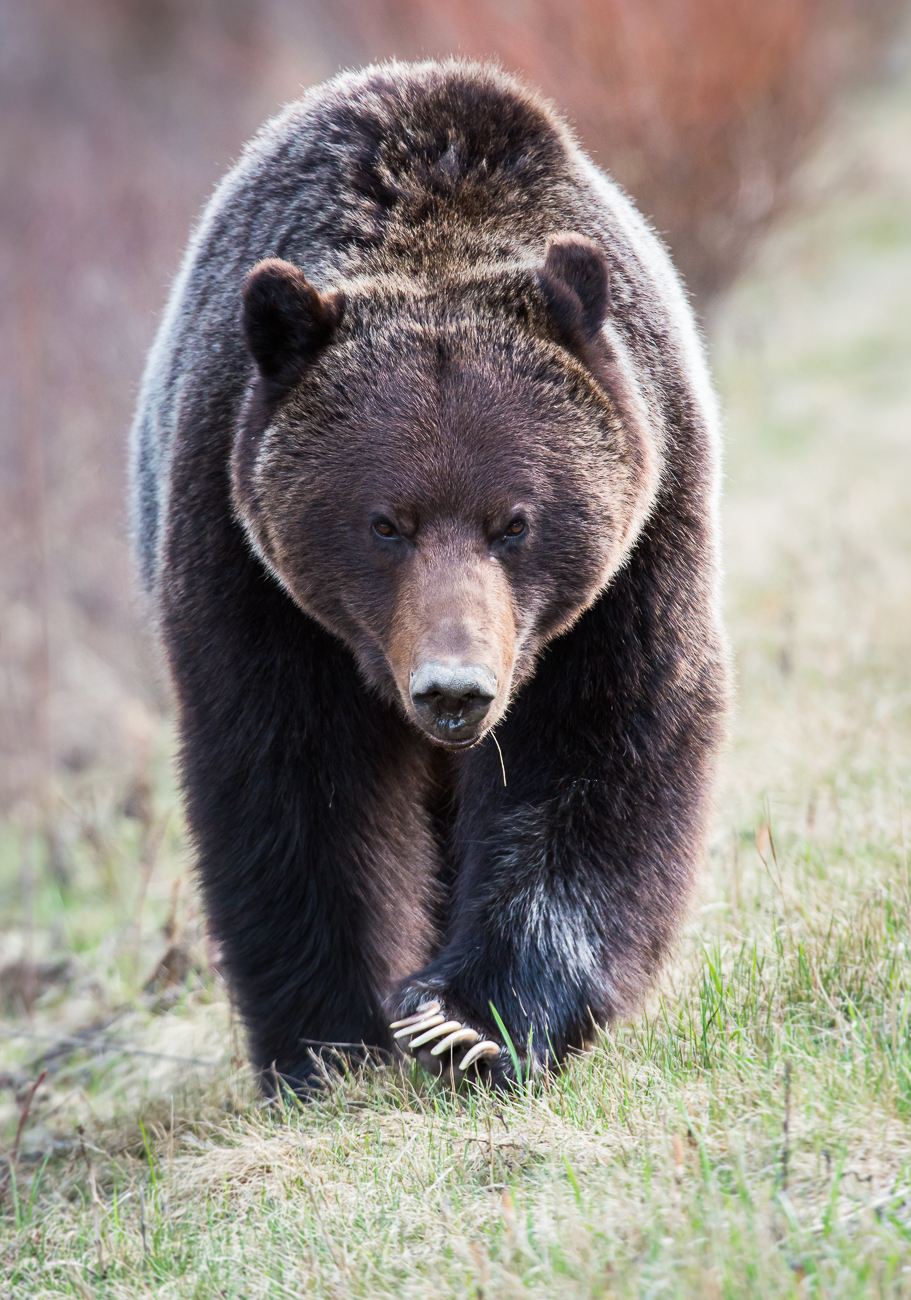
“We can’t all have that iconic experience with a grizzly bear.”
Mount Robson’s Elliott Ingles gets why people want to see a bear in the wild, but agrees with Barbara.
“Sure, it would be great to sit there and watch a grizzly, but is that natural? Do they need that person sitting there staring at them? In my opinion, not so much.”
But Harvey Locke, one of the world’s leading authorities on biodiversity, has a different take.
“I’m not sure that I agree with the assessment of some park officials that taking a picture of a wild animal is a big problem, if people stay in their cars and aren’t harassing it.”
Humane Canada’s Barbara Cartwright counters that it’s not only grizzly bears that can help people connect to nature.
“I don’t believe that nature is at a park 2 hours away from here. I see it everywhere. I see it with our trees and our squirrels and our birds.”
And yet, as Harvey describes, squirrels and municipal parks won’t give you this experience:
“This tiger came out of the forest and walked right at me from maybe 15 metres away. And I looked at it and had this moment. (I realized then) for me it needs to be about all this stuff (global biodiversity), not just home (the Canadian Rockies).”
It was a moment that sparked a movement and it’s why conservation advocate Ken Wu believes having more people see a bear or a tiger matters, no matter the problems that tourism brings to the equation.
“I think this is worth it ultimately.”
EXPOSED founder John Marriott adds that “if we can’t connect people to nature in a way that’s both affordable and achievable, then we’re going to lose this battle with climate change and not have enough people on our side to fight for wildlife.”

Terrence Jackson – a US-based wildlife photographer and part of the tourism workforce – knows society is both loving nature to death and not loving nature enough. And striking the balance between these two realities?
“That’s a question that I have grappled with for a very long time.
Even so, Terrence believes that without seeing true wilderness, it’s hard to understand it or advocate for it.
“I don’t think, originally, I was open to the experience of being outdoors as much as I would have liked. But truly, just being in Yellowstone (National Park) for that first year just gave me a perspective and made me appreciate a lot of things that I would never have appreciated before. So, I think the reason that I truly care about nature is because (visiting nature) basically opened my eyes.”
Growing up, Terrence never had the opportunity to visit parks.
“When I was in high school, I went on a field trip to a prison. You know, we’re not really encouraging our students here to get out and see nature.”
That’s an example of systemic racism, by the way, and it’s also an example of why there are fewer nature advocates in racialized communities, explains Terrence.
“I hate to say it, but I don’t know very many African American people who would go out and camp or hike.”
It’s why Terrance believes “we’re not going to necessarily change the world overnight, but I definitely think that it starts with that one person encouraging someone else to get out into nature.”
More than that, Terrance explains, we need people to spend quality time in nature, observing and learning from wildlife.
After all, Terrance argues, observing a bear over a long period of time – and across multiple visits – is how you truly understand bears and issues facing nature. A 30 second photo-op is just an Instagram post, but multiple, long encounters is education, Terrence argues.
“People tend to share those experiences with other people.”
And Brian Keating, the man behind numerous species recovery efforts in Canada, agrees.
“The trick is to give people that quality experience that will sit in their heart and mind. Something that’s very special; something that will develop empathy toward the wild or foster an interest in the wild or stimulate a call to action.”
Elliot Ingles hears the point.
“I get lots of opportunities to see bears. It never changes for me. I still want to sit and watch that animal.”
It’s why Parks Canada’s Louis-René Sénéchal says “get out there. Go for it. Find places where you can have the experience you are looking for. But it’s probably not going to be on the Trans-Canada highway through Banff.”
And yet Banff and Jasper are more affordable than, say, the Great Bear Rainforest on Canada’s west coast – where bear watching might be better regulated and be a better overall experience, but is affordable only to those who have the incentive and the savings.
It’s why Park Operator Loraina Stephen says we need affordable parks like Mount Robson.
“I think it’s essential. It is an affordable and accessible option for people and families. You can come here and enjoy nature and wilderness and all that it has to offer without spending too much money.”
And Mount Robson’s Elliott Ingles agrees.
“The world is expensive, so it’s nice to have something that’s reasonably priced.”
But the more affordable the park, the bigger the challenges. And as Elliott explains, “it’s exciting to see wildlife. Everyone wants to see it. And every time I see a bear, I want to stop and look myself. But there is a right way to do it – and a right place to do it – and, unfortunately, the Highway 16 corridor just doesn’t work that well.”
Is there a solution? Elliott says “if you can find me a safe way (I’m open to ideas). I don’t want to cage an animal.”
To find that solution, remember this:
“Of course, we have huge numbers of people moving through the parks. Let’s celebrate that. Let’s congratulate ourselves for getting people interested enough to take the time to go into our national parks. We do need an educated population, a literate population on ecological systems. We have to start somewhere.”
- Brian Keating | Nature Storyteller
“If students and young people don’t encounter nature at all, then 20 years from now, when they’re adults and forming policy and sitting in government offices, they won’t have that connection that sparks the urge to really value natural places.”
- Angela Waldie | Poet & Literary Professor
“They’re alive to what’s being reflected back to them. If there ain’t no picture of it, they’re maybe not as alive to it.”
- Shachi Kurl | Pollster
“People have an impact on these places, but the effect of the people who are visiting these places on the long-term protection of nature is certainly a very, very important thing.”
- Jon Mobeck | Conservation Advocate
“(It) may seem a contradiction – protecting the animals and the natural processes and the traditional ways of Indigenous peoples…in protected areas, but (also) bringing in hordes of tourists to visit. (But) Parks Canada cannot exist without the government saying it does and the government will not want to say Parks Canada should exist without the public’s support behind it.”
- Louis-René Sénéchal | Parks Canada
“I think we can have pretty high levels of tourism and maintain grizzly bear populations. Those tourists can’t be ignorant, however.”
- Stephen Herrero | Bear Biologist
“I think it’s a careful balance. But if people get careless with the balance, easily – within a matter of a year or two – can fall into disrepair.”
- Rick Antonson | Travel Author
Good points. But also remember, to make the right decision – the better decision – we need to be clear on the role of parks in our society.
Are they a place for wildlife and nature, or a place for recreation?
Are they living classrooms needing more regulation or spaces that need fewer rules, allowing for activities like hunting that might bridges societal divides – or might open up new ones?
Realistically, almost every decision impacts someone’s bottom line – their culture, their beliefs, their livelihood, their sense of justice, their – our – environment. And it’s hard to argue minority rights for one segment of the population, without applying those same rights to the others.
Indeed, in the wake of the so-called Freedom Convoy of truckers that disrupted many parts of Canada, but most especially Ottawa, in 2022, there are those arguing that our generalizations have moved into an even more dangerous space: We’re picking and choosing when we apply the law and to whom. It’s at the heart of racial discrimination and the urban-rural divide and to solve both issues, it was argued by Brian Lee Crowley in The Line, we need to accept some hard truths. In issues of the law and rights, we can’t pick winners and losers based on our political beliefs.
And though that might seem like a tangential point, it’s not: It needs to be considered when answering the question of how best to balance people and nature in parks – what regulations to apply and to whom and where. And when we get that and try to do that, we remember why such a seemingly simple issue is so maddeningly complex.
That’s overwhelming and it’s why so many of us would rather shut off than engage.
“Hasan Minhaj, one of the online comedians in the US, has this line where he says ‘I’m lazier than I am woke’. And I think that’s true for many of us.”
Dr. Aleem Bharwani is the director of public policy at the Cumming School of Medicine at the University of Calgary and he understands that the issues are hard – that what to do isn’t easy or obvious. But Aleem adds, “It’s true of personal relationships, it’s true of big system issues, it’s true of a lot of things: We do always realize what we’ve got until it until it’s gone.”
It’s why Aleem believes we all need to overcome our fear – and laziness – to help find solutions to this question and all challenges we face. But in the doing, we must remember:
“There is no point in policy, even if it’s exactly what people want, if it’s not true, if it’s grounded in reality. Otherwise, it’s no different than a wishing well.”
Aleem says that means “the goal should be to facilitate honest, respectful dialogue.”
Which is easier said than done, until you think about this, Aleem argues:
“Sometimes you just need a turn of the Kaleidoscope, where you’re looking at that same problem, that same piece of that same wall, and if some components are turned a slight way, now suddenly you can drive that line of inquiry in a very different direction.”
So, let’s do just that.
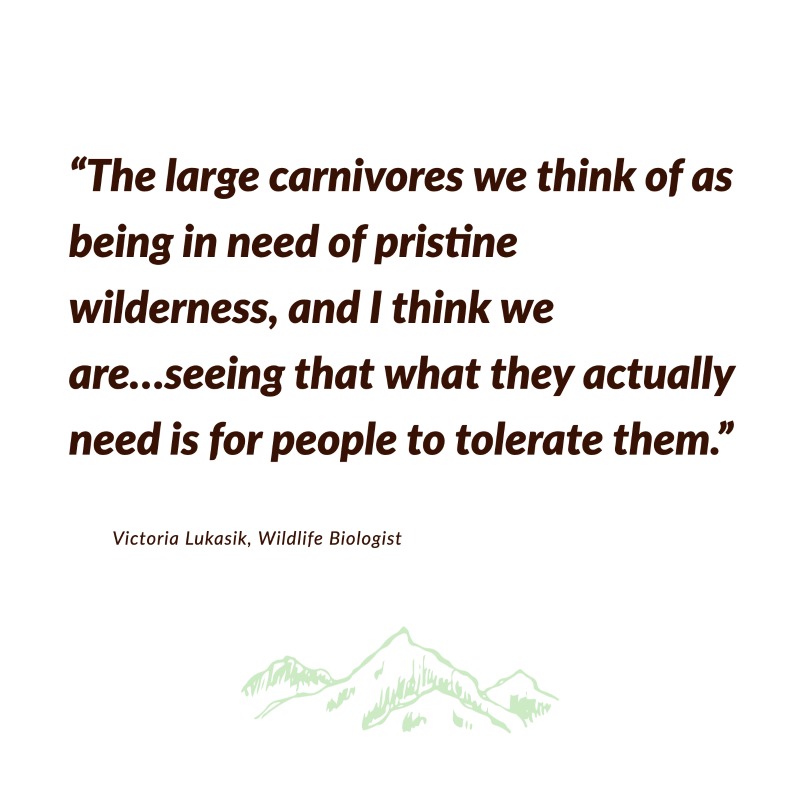
By now you understand why the intersection of people and nature is so accident prone – so messy for decision-makers. And yet that’s in part because the decision-making axis has always been trees versus jobs, environment versus the economy, as Dr. Victoria Lukasik reminds us.
“Our economic interests, which are usually the same as our political interests, are things that are often in contrast with what is best for wildlife and our environment. It’s not to say that it has to be environment versus jobs – there are other ways – but that’s the way we kind of operate as a society in Canada.”
But what if we turn the kaleidoscope? What if we looked at the issue from a different perspective?
“I do think that there’s a lot of species that can survive (without parks). Maybe it’s not the ideal, but they can survive in these modified landscapes that we’ve created.”
Victoria is a scientist who has worked with communities and decision-makers to better understand what it will take to save biodiversity. And Victoria says emerging science suggests parks are only necessary because we refuse to co-exist with large carnivores.
“The large carnivores, we think of them as sort of being in need of pristine wilderness. And I think we’re more and more seeing that, actually, what they need is just for people to tolerate them.”
Grizzly bear biologist Gordon Stenhouse has been one of the leading researchers on this very subject. Gordon tells us, “our long-term data and published research papers allowed the government and industry to agree with the need for open road density thresholds for these (developed) habitats in order to ensure high levels of grizzly bear survival.”
What does that mean? Roads – and the activities that usually go along with them, like ATV use, hunting, biking, hiking – are more problematic for grizzlies than habitat loss.
“And so that does sometimes require sacrifice on our part,” explains Victoria Lukasik.
It also means we face a choice.
Victoria says, “if the people on the landscape could make the space for wildlife, then we wouldn’t need to have a ton of parks.”
Famed bear biologist Dr. Stephen Herrero agrees, adding the biggest threat to grizzlies?
“It’s really the lack of people willing to coexist. In order to coexist with grizzlies, you need to be willing to accept a certain set of behavioral standards. Garbage, simple thing. But managing garbage, and storing it in a way that won’t attract grizzlies, is essential (for their survival).”
It’s why Humane Canada’s Barbara Cartwright says coexistence matters more than parks, more important than ideas like Nature Needs Half.
“On one side, we’re impacting our environment too much. So, can we have some space for the rest of the world to live without our influence? But then if we do that, we’re going to lose our ability to live together and to maintain the health of the ecosystem with us in it.”
Northern Development’s Joel McKay agrees that we need to find a way to help nature while still allowing the opportunity for people to earn a living on the landscape.
Joel tells us, “you always want to pursue a balance between local economic needs and local environmental needs.”
But Joel reminds us that what “needs to be realized is that rural communities, especially those in the North, have few realistic options for private-sector employment that are outside of natural resource industries.”
Joel adds: “The question we need to answer is how do we right-size these industries so that they’re sustainable over the long term and operate them in a way that has little to no impact on the environment but still generates a healthy profit margin?”
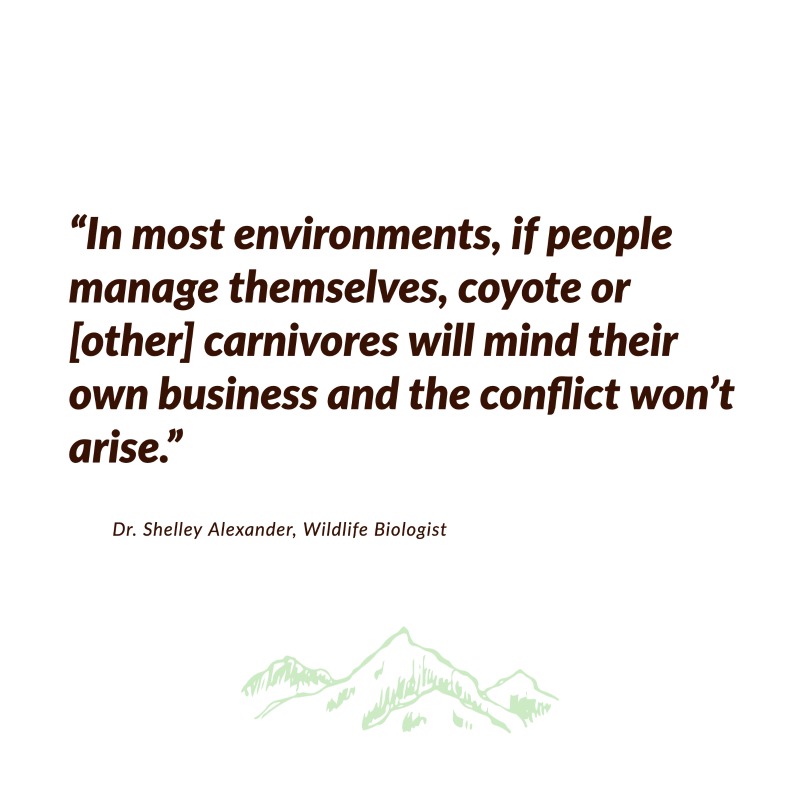
Dr. Shelly Alexander is one of Canada’s leading experts on wildlife coexistence and she believes: “coexistence is possible.”
Shelley’s work with canids around the globe – and specifically with coyotes in urban and suburban Calgary – have underscored this point.
“In most environments, if people manage themselves, carnivores mind their own business and do their own thing and the conflict will not arise. That means there are options on a daily basis, if you’re living in an urban environment, to think about maintaining biodiversity, to coexist with carnivores.”
That said, even though Shelley knows we’re capable of coexistence, she doesn’t believe enough of us are actually willing to coexist with carnivores.
“There are people who are (saying) just forget this whole save half world thing. Just make it all about coexisting, humans and animals. But there’s limits to that. It’s not like we’re never going to run into conflict, without something going wrong.”
Which is why Shelley believes only concepts like Nature Needs Half – the proposal to protect half the world – will ultimately save biodiversity.
“I am still an advocate for maintaining big, protected areas where, to the best of their ability, these animals can still live out their lives.”
But what if in exchange for more parks – having a policy like Nature Needs Half – we would also need to prioritize cultural and recreation traditions within them – including hunting, ATV use, skiing and wildlife photography? Neil Fletcher of the BC Wildlife Federation says the only good solutions are the ones that take into account rural culture and values.
“These people are here to stay. They’re not going anywhere. They’re going to be living on this landscape with you and the earlier you can get to towards working with them and understanding their positions, the better you might be able to find some shared solutions.”
And that’s why Ken Wu – founder of Endangered Ecosystem Alliance – believes this is exactly the kind of trade we need to be willing to make.
“You can’t make an alliance with everybody, but it’s just that we can make alliances way beyond where we are now. Why? Environmental activists are good at rallying up other environmental activists.”
Which is fair, Ken says.
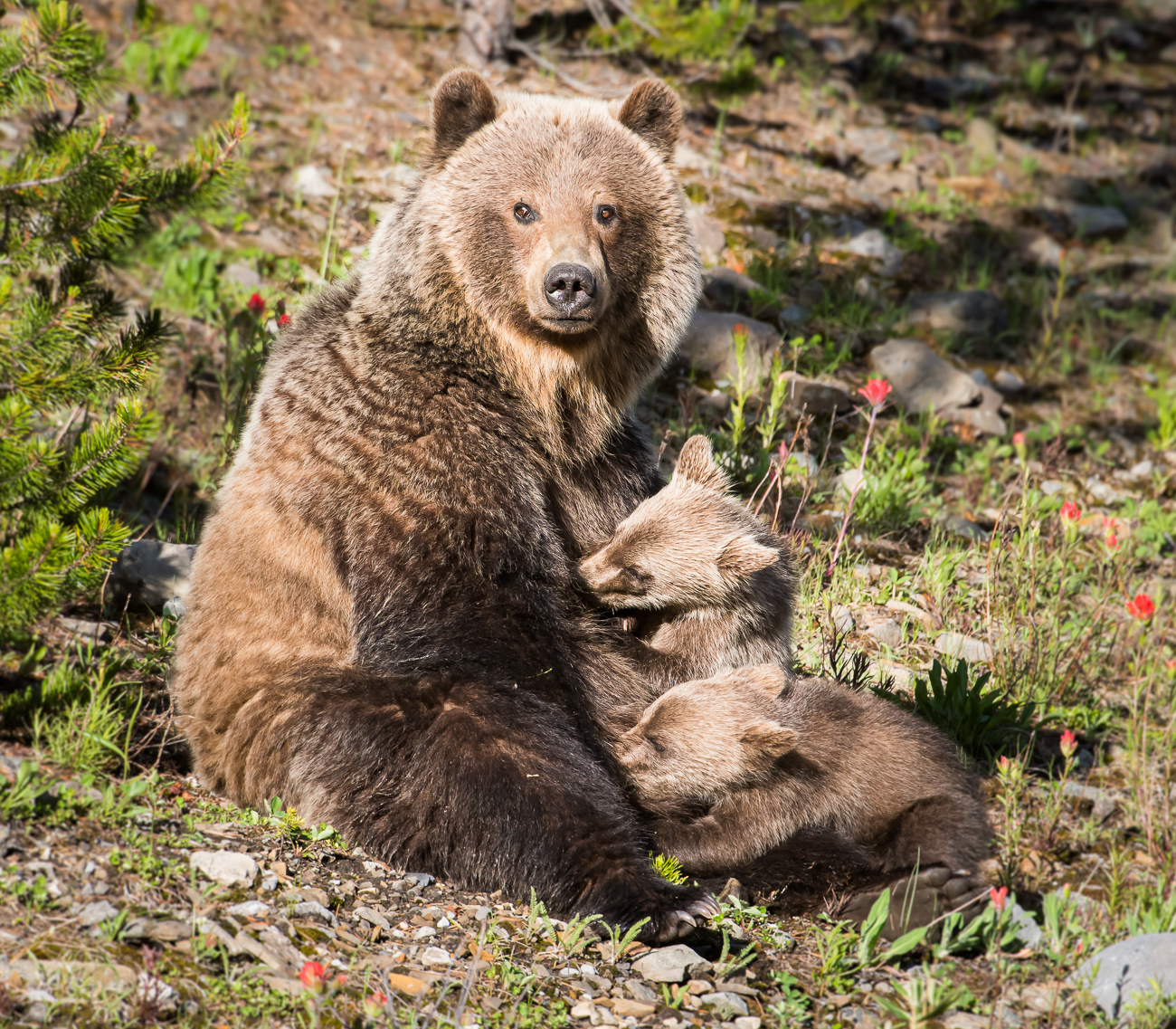
“You know, you talk to your own kind. You don’t normally try to do something uncomfortable all the timeout with people who are not like you. That’s just not a natural instinct, right? But we’re gonna lose if we keep on doing this.”
Think about it: What if the choice isn’t environment or the economy, but culture or the economy? Animal rights or ecosystem rights?
How might existing alliances devolve and form? How might voting blocs shift? How might the conversation be altered?
There would still be division and disagreement, of course, but maybe not down the same fault lines.
And if every debate didn’t send our traditional, national solitudes to their traditional corners for a pitted culture war – Indigenous values versus non-Indigenous values, pro-environment versus pro-economy, urban versus rural, east versus west – what might that mean?
It could be the spark needed for old adversaries to build new alliances, reshaping our debates and bridging our divides in the process.
Right now, our decision-making paradigm is predicated on having our cake and eating it too. But that seems like an old-world model; it seems naïve to think the good old-fashioned Canadian compromise can still yield enough win-wins enough of us.
By choosing between a) way more resource development than we’re currently allowing, way fewer parks and very few recreational opportunities, such as hunting, skiing, hiking, photography and ATV use; or b) way fewer regulations, allowing for way, way more hunting, skiing, hiking, photography and ATV use opportunities, but also vastly increasing the amount of protected land and significantly scaling back resource development, we’d all be forced to reassess our priorities and understand what truly matters the most, to each of us.
We’d be forced to re-look at the policy proposals and the economics and the science and the research and the stories of all affected to see what scenario best balances the needs of people and nature.
Which isn’t to say this is how we should solve our problems – that decisions are this simplistic.
They’re not.
But we do need to re-examine the problems we’re facing and how we make decisions. We can’t live in a world of zero-sum wins that cost more than dollars or species, but also the very health of our democracy.
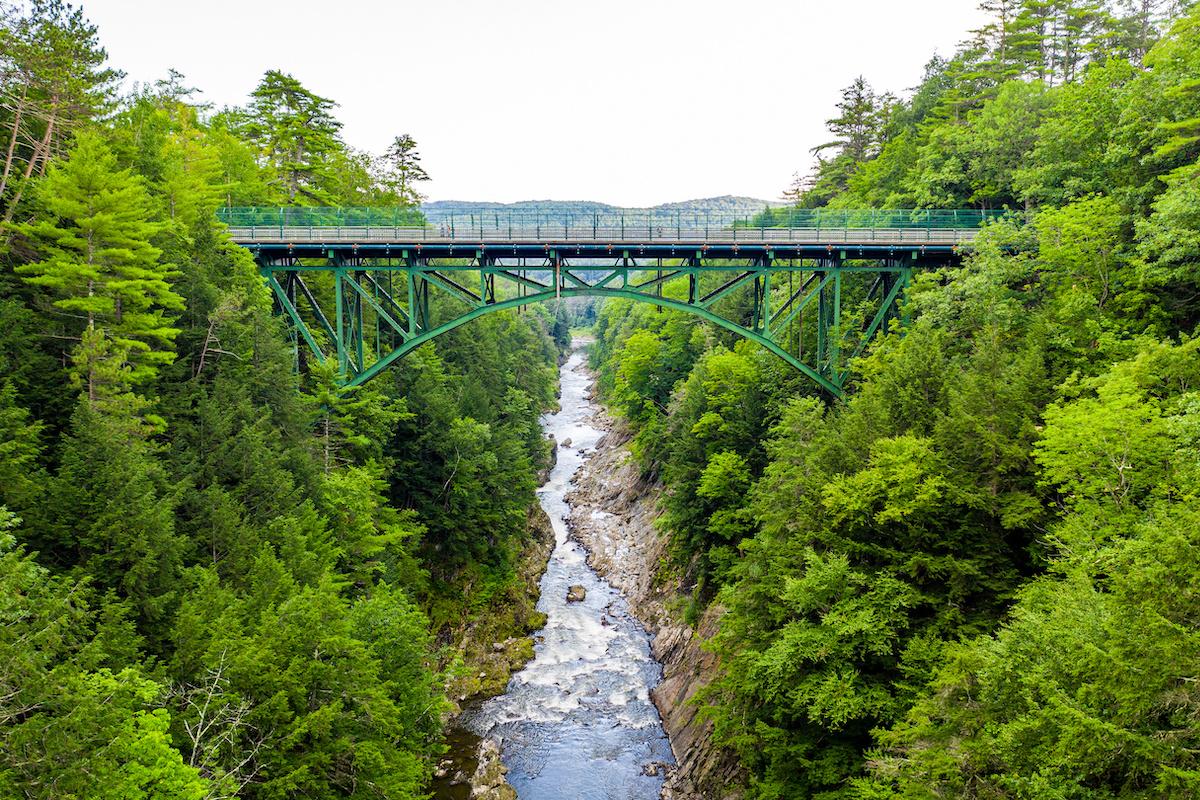
We need to think critically and act creatively and simply do better – in our conversations, our negotiations, our decisions – for people and nature.
In the words of our former prime minister, Kim Campbell, “create, as much as possible, bridges with people who may not think alike. Try and find ways of building around dogmatism and political polarization by finding the common ground. And it’s hard.”
For the sake of our democracy, we must to consider those we disagree with when we decide what we must have and what we only wish we could have. Because, after all, as Shelley Alexander reminds us: “it comes down again to values what do we want? What’s the legacy?
Task
Discuss
Define
Referenced Resources
* Quotes have been edited for brevity and clarity.